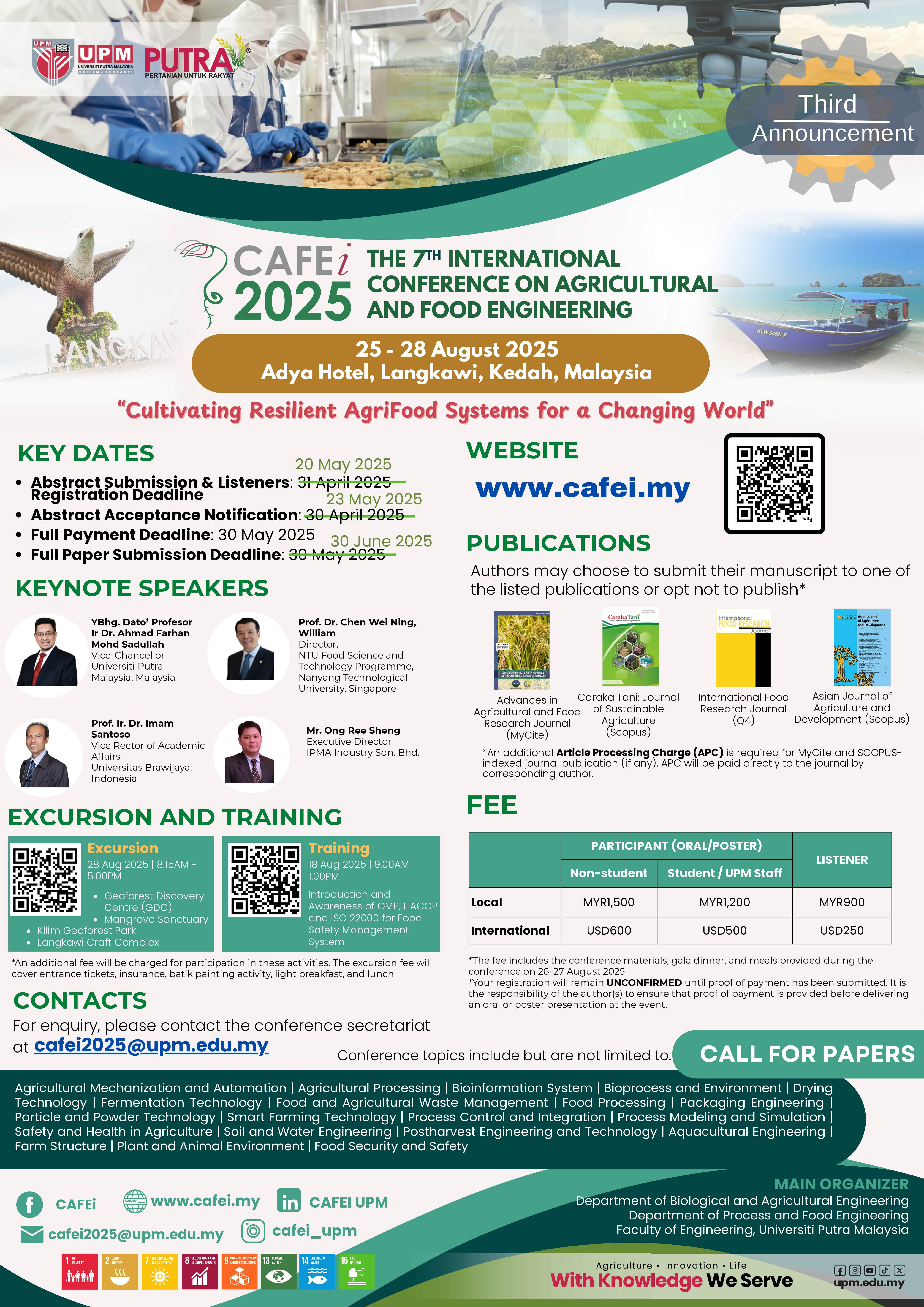Utilising Banana Peel as a Food Ingredient for Enhancing Nutritional Value of Yellow Noodles and Beef Patties
DOI:
https://doi.org/10.36877/aafrj.a0000501Abstract
Bananas are one of the most popular fruits around the world. There are more than 150 different countries that have banana plantations. Most of the bananas can be either eaten raw or processed to become tasty banana products such as banana chips, banana cake or banana milk. However, a lot of consumption will make a lot of waste at the same time. Therefore, the high demand for bananas in the market causes the problem of environmental pollution due to the higher production of banana peel waste which is becoming serious nowadays. The wastes derived from bananas can be transformed into other useful products. Based on the result from proximate analysis, the chemical compositions of the banana peel are ash (7.0%), carbohydrate (71.0%), moisture content (8.9%), fat (13.0%), dietary fibre (35.9%), crude fibre (16.6%), and finally the protein (6.5%). From its chemical composition, the carbohydrate content of the banana peel is the highest among other components. Because of this high carbohydrate and fibre content, banana peels have the potential to become a nutritional ingredient to produce healthy food or beverage products. In this paper, the fibre content can be observed by the increase in the carbohydrate content. The results show that the addition of banana peel powder had helped to improve the nutritional value of fibre content for yellow noodles from 19.4% to 21.3% after 10% of banana peel powder (BPP) was added. However, the results of fibre content for each beef patties sample were not consistent and this may be due to the agglomeration of BPP in the patties. Nevertheless, the fibre content of patties which contain the highest value of BPP (6%) achieved the highest fibre content at the same time. In short, the pollution issue caused by the banana peel can be solved efficiently if humans can learn to manage the banana peel as a material, not a waste.
Downloads
Published
How to Cite
Issue
Section
License
Copyright (c) 2024 Zanariah Mohd Dom, Wen Qi Chan, Nurin Adlina Ab Aziz

This work is licensed under a Creative Commons Attribution-NonCommercial 4.0 International License.
Author(s) shall retain the copyright of their work and grant the Journal/Publisher right for the first publication with the work simultaneously licensed under:
Creative Commons Attribution-NonCommercial 4.0 International (CC BY-NC 4.0). This license allows for the copying, distribution and transmission of the work, provided the correct attribution of the original creator is stated. Adaptation and remixing are also permitted.

This broad license intends to facilitate free access to, as well as the unrestricted reuse of, original works of all types for non-commercial purposes.
The author(s) permits HH Publisher to publish this article that has not been submitted elsewhere.

.png)

.jpg)



